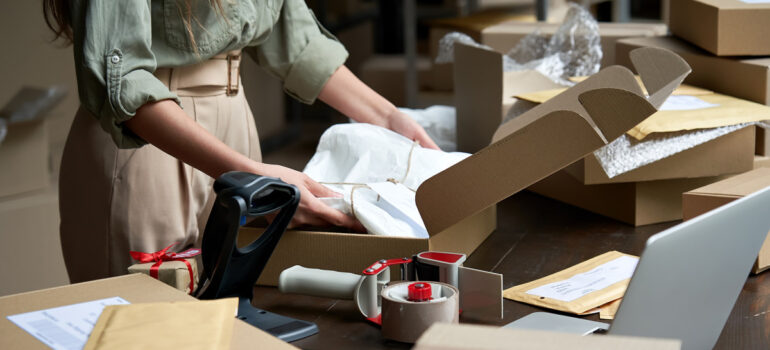The value of bespoke packaging in today’s cutthroat industry cannot be emphasized. Businesses across various industries are recognizing that packaging is not merely a vessel for transporting goods but a powerful tool for branding, marketing, and enhancing the overall customer experience. However, achieving the perfect balance between cost and quality in custom packaging services is crucial for optimizing results without straining the budget. This article explores strategies for businesses to strike that balance effectively.
The Importance Of Custom Packaging
Custom packaging serves multiple purposes beyond the basic function of containing and protecting a product. It is a critical component of a brand’s identity and can significantly influence consumer perception and purchasing decisions. High-quality custom packaging can enhance brand recognition, create a memorable unboxing experience, and differentiate a product from its competitors. However, these benefits come with the challenge of managing costs.
Assessing Your Packaging Needs
The first step in balancing cost and quality is to thoroughly assess your packaging needs. Consider the following factors:
- Product Specifications: The size, shape, and fragility of the product will dictate the type of packaging required. For example, delicate items may need additional protective features, which can impact the cost.
- Brand Identity: Your packaging should reflect your brand’s identity and values. Luxury brands, for instance, might invest more in high-end materials and finishes, while eco-friendly brands might prioritize sustainable packaging solutions.
- Customer Experience: Think about the unboxing experience from the customer’s perspective. Custom packaging that is visually appealing and easy to open can enhance customer satisfaction and encourage repeat purchases.
Choosing The Right Materials
Selecting the right materials is crucial in balancing cost and quality. Here are some considerations:
- Material Options: Common packaging materials include cardboard, paperboard, plastic, and corrugated fiberboard. Each material has its own cost implications and quality attributes. For instance, corrugated fiberboard is sturdy and cost-effective for shipping, while high-quality cardboard may be better for retail displays.
- Sustainability: The need for environmentally friendly packaging options is rising. While eco-friendly materials like recycled paper and biodegradable plastics may come at a higher cost, they can enhance your brand’s reputation and appeal to environmentally conscious consumers.
- Durability Vs. Aesthetics: Striking a balance between durability and aesthetics is essential. While high-end materials and finishes may enhance visual appeal, they should not compromise the packaging’s ability to protect the product.
Working With Custom Packaging Services
Partnering with a reputable custom packaging service provider is key to achieving optimal results. When selecting a provider, consider the following:
- Experience And Expertise: Choose a supplier with experience and success in your industry. Experienced providers can offer valuable insights and recommendations tailored to your specific needs.
- Customization Options: Make sure the supplier provides a large number of customisation options, ranging from printing methods to material selection. Because of its adaptability, you may design packaging that reflects the essence of your brand.
- Cost Transparency: Look for a provider that offers clear and transparent pricing. Avoid hidden fees and unexpected costs by discussing all aspects of the project upfront.
- Quality Control: Quality assurance is critical in custom packaging. Cooperate with suppliers who have implemented strict quality control procedures to guarantee dependability and uniformity.
Optimizing Costs Without Compromising Quality
Balancing cost and quality in custom packaging requires strategic planning and smart decision-making. Here are some strategies to help:
- Bulk Ordering: Ordering packaging materials in bulk can lead to significant cost savings. Discuss volume discounts with your provider to maximize your budget.
- Streamlined Design: Simplifying the design without sacrificing key brand elements can reduce costs. Focus on essential design features that convey your brand message effectively.
- Multi-Purpose Packaging: Consider designing packaging that can serve multiple purposes. For example, packaging that doubles as a display unit can save on additional display costs.
- Regular Review And Optimization: Continuously review and optimize your packaging strategy. Stay informed about new materials, technologies, and trends that could offer cost-effective solutions without compromising quality.
Conclusion
Custom packaging is a vital aspect of modern business strategy, influencing brand perception and customer satisfaction. Balancing cost and quality in custom packaging services is essential for achieving optimal results. By carefully assessing your packaging needs, selecting the right materials, partnering with experienced providers, and implementing cost-saving strategies, businesses can create effective custom packaging that enhances their brand while staying within budget. The key lies in strategic planning and ongoing optimization to ensure your packaging continues to meet both your financial and quality objectives.





